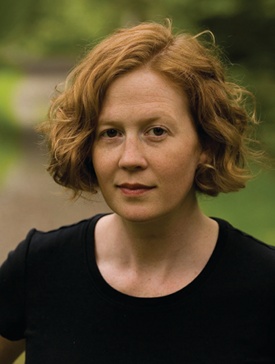We were very fortunate to have Emma Marris partipicate in PERC’s “Reconciling Economics and Ecology” workshop earlier this month. Marris is the author of Rambuctious Garden: Saving Nature in a Post-Wild World, which has quickly gained recognition as one of the most important environmental books on the shelves today. In the words of Jon Christensen, it is “turning the conservation movement upside down.”
Marris challenges the notion that the nature worth preserving is pristine, far away, and devoid of human action. She advances a new perspective of environmentalism that sees nature almost everywhere — in backyards, city streets, even a python-infested Everglades. The book argues that we should jettison the notion of pristine nature, and instead tend a rambunctious garden, “a hybrid of wild nature and human management.”
You can watch the book’s trailer, check out the reviews, or read an excerpt — but you might as well just buy the book. Thanks to Emma for taking the time to answer our questions. For more PERC Q&As, see the series archive.
Q: Given that PERC is just miles from Yellowstone National Park, we are keen to learn more about the “Yellowstone Model” described in your book. Can you summarize the
model?
A: The phrase “Yellowstone Model” is shorthand for a conservation strategy that focuses most or all of its attention on creating and maintaining protected areas with very strict limits on human use. In my book, I suggest that in the 21st century, we must expand our suite of tools beyond this narrow focus and complement our protected areas with conservation on private lands, working lands, urban lands, suburban backyards—in short, everywhere. But I want to make clear that I do not support abandoning or privatizing public parks like Yellowstone. They are crucial for goals like large predator conservation and preservation of opportunities for public recreation. In my book, I describe such places as “a crucial part of an expanded model. Such strictly protected areas become anchors, with overlapping zones of various protection regimes and conservation goals radiating out from them, like petals from the center of a rose.”
Q: If the pristine wilderness notion is passé what is the new paradigm?
A: We have to determine that together. And the goal won’t be the same in every place. Here it might be maximization of ecosystem services, there protection of biodiversity, and over there, beauty. The challenge is how to make these determinations in a fair and scientifically informed way, on the appropriate scales.
Q: How can the notion of novel ecosystems, with people at the heart of the system, help guide policy?
A: The label “novel ecosystems” is a little misleading because it suggests that there are lots of non-novel ecosystems. But science tells us that ecosystems are not static entities, so on longer timescales everything is novel. And as the climate changes, every ecosystem will display increasingly novel features. That said, I like that the label rechristens what might have been labeled “trashy areas,” “degraded areas” or “failures” as “novel ecosystems”—something with potential conservation value, something, in short, that perhaps should not be paved over and turned into a mall or a subdivision.
Q: You dedicate your book to your mother and thank her for sending you to Audubon Camp. As a new mother, are you concerned that your child will be able to have a similar experience in a post-wild world? Or is “Nature Deficit Disorder” taking hold?
A: Part of expanding our nature awareness beyond parks is that it makes it easier to see nature on your block, in cities and suburbs. Then, instead of teaching our children to only look for nature when they visit a park, we can teach them to also see it on the walk to school or when playing in the backyard. My toddler collects leaves and seeds from street trees on our walks and has learned to tell a pine from a maple and a fir from a pine. Thus even busy, stressed parents can get their kids interested in real nature.




